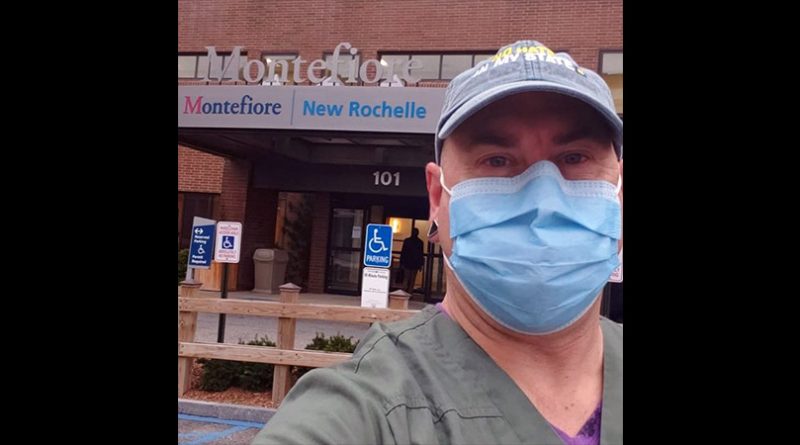UWSP nursing student joins New York City’s COVID-19 battle
Metro Wire Staff
Mickey James Hollander has served at the frontlines of two wars for the United States.
His first life-and-death encounter came as a 21-year-old paratrooper in the U.S. Army’s 82nd Airborne during Operation Desert Storm in 1991, when he delivered essential supplies to U.S. troops fighting Iraqi forces in Kuwait.
Now, the 51-year-old University of Wisconsin-Stevens Point nursing student has joined the battle against COVID-19, which has killed more than 200,000 people worldwide.
Since early April, Hollander has been working in the New York City area, the nation’s epicenter for the disease. He cares for COVID-19 patients solely as a bedside nurse at Montefiore New Rochelle Hospital, which expanded to 120 beds.
A March 27 phone call from a Manhattan friend motivated him to serve his country again, Hollander said. “You are single, you have no mortgage payment, you are a registered nurse, I need you in New York. What are you doing in Wisconsin?” his friend asked.
At the time, Hollander was working as a nurse at Aspirus Hospital in Wausau and attending UW-Stevens Point at Wausau, enrolled in the university’s Nursing: BSN Completion Program. He earned his two-year nursing degree in December.
“When I was in the army, they didn’t give me a chance to think about it when they threw me into war,” Hollander said. “At least I had the option to decide this one.”
Compelled to put his experience and skills to battle the pandemic, Hollander left his job, packed clothes and personal belongings that fit in his car, and drove to New York City with his dog, Russia.
He arrived in New York without a job, a state nursing license, or a place to live. But within days, through his efforts and help from others, including UW-Stevens Point nursing instructors Heidi Wincentsen and Lorraine Zoromski, he now has a renewable employment contract with a national health care company and a hotel room to live.
He provides care and comfort for seven to nine COVID-19 patients each day, working 12-hour shifts. Most are scared, disoriented, and gasping for breath. Some are struggling to live.
The work takes a physical and emotional toll on everybody, Hollander said.
“I do bring a lot of skills with me, and I’m finding out now how valuable those skills are, especially when there is death all around you,” he said.
Staying focused during chaos is the ability he relies on the most, Hollander said. “We’re all in this together, from housekeeping to the doctors. We all have a job to do.”
It’s difficult to deal with the physical separation between critically ill patients and family members not allowed in the hospital to prevent the virus’s spread, Hollander said. When assigned a patient, he requests the patient’s key point-of-care contacts and their phone numbers. Using the telephone in each room, he calls the patient’s loved ones.
“I let them speak with their patient because I don’t feel somebody should die alone. While I’m comforting my patient, I know their family is also being comforted,” he said.
Zoromski and Wincentsen are proud of Hollander, who is taking three nursing courses this semester. Zoromski encouraged him to keep a daily journal of his pandemic-care experience to benefit other students and health care professionals.
“Nurses in every area of health care are vulnerable on the frontlines of the pandemic, as they put their personal health and that of their family at risk,” said Wincentsen, who is also a nurse.
“Mickey’s story shows the unprecedented caring response in nursing as a core attribute and the emotional toll that is often unnoticed in health care.”
Hollander credits past and current instructors for coaching him through the challenges of being a COVID-19 nurse. “My professors have been the wind beneath my wings. I can always call them with questions,” he said. “When I’m struggling, they’re there to support me and to lift me up.”

